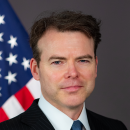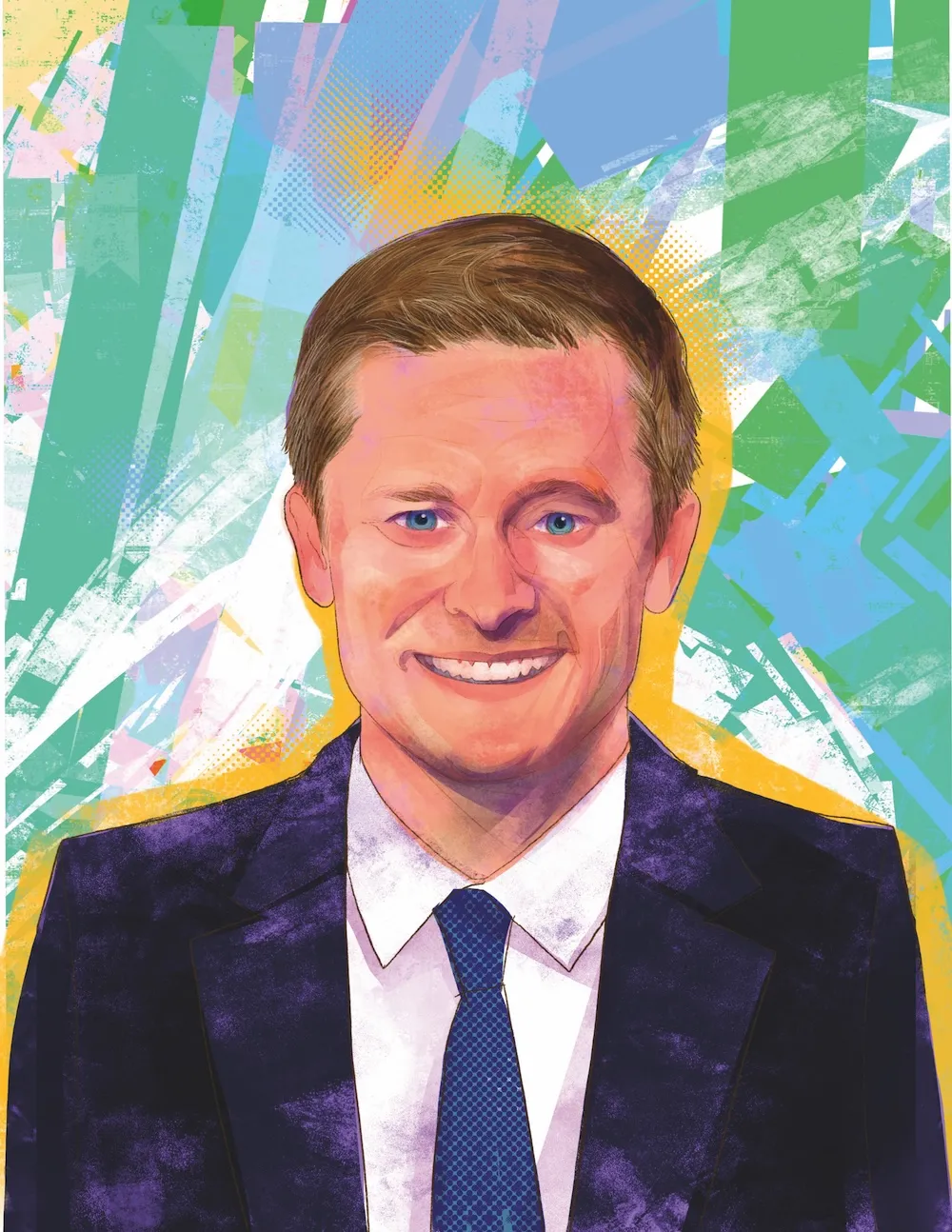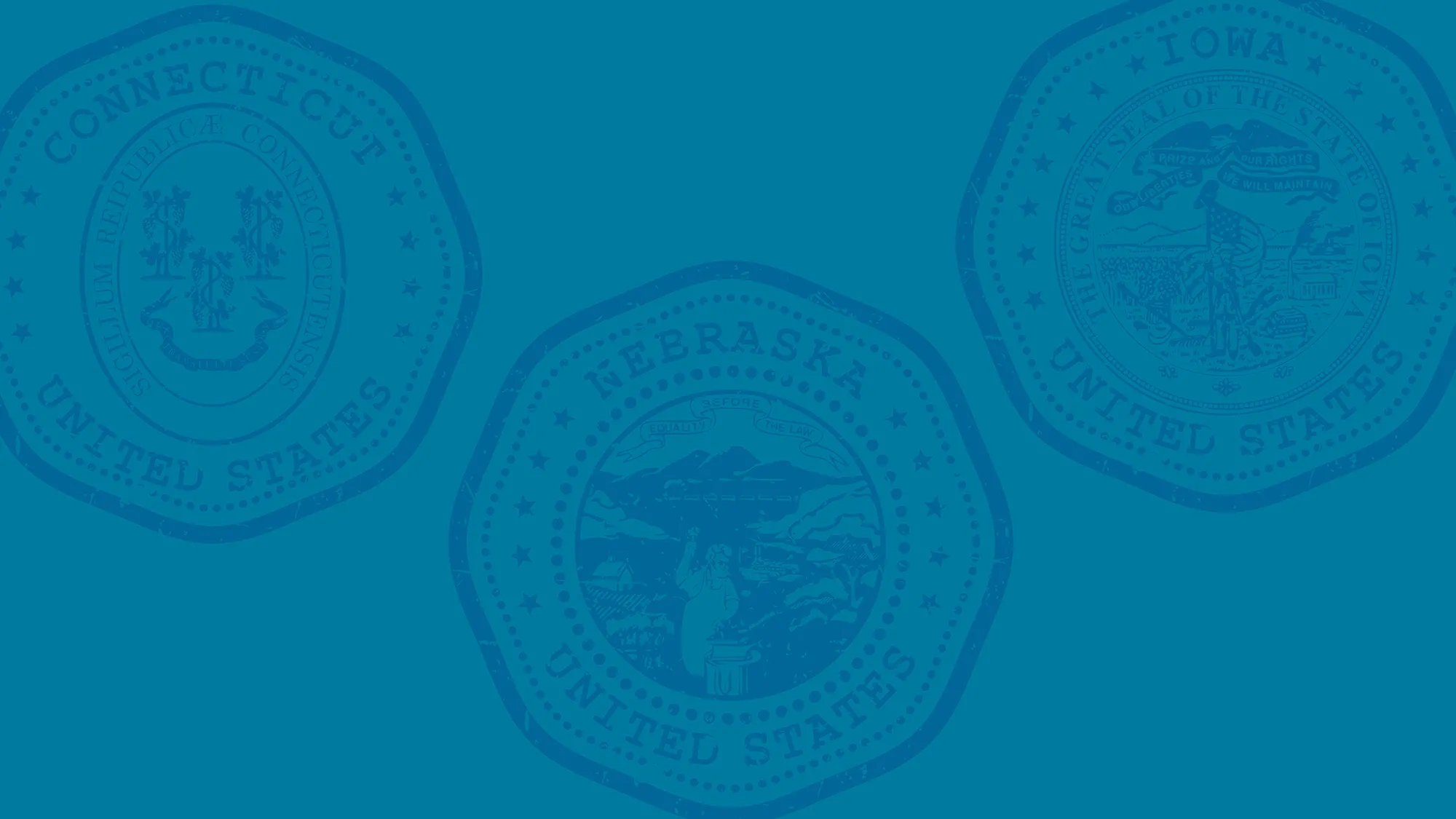With Chevron Deference Ended, What Happens Next?

For years, the writing was on the wall that the Chevron doctrine would end.
“For many years, court watchers have expected the Supreme Court to revisit Chevron,” said Bridget Fahey, Assistant Professor of Law. “It has been less clear whether the Court would dismantle Chevron slowly, overrule it outright, or revise and adjust it.”
The Chevron deference doctrine provided that when Congress had not directly addressed a question about the meaning of a statue, courts had to uphold a federal agency’s interpretation, so long as that interpretation was reasonable. It is named after the Supreme Court’s 1984 decision in Chevron v. Natural Resources Defense Council—although its proponents say the basic principle has been around much longer—and had been cited more than 18,000 times across federal court decisions.
In recent years, although lower courts still cited Chevron regularly, the Supreme Court had all but stopped. In 2024, Chevron deference officially came to an end when the Supreme Court took the case of Loper Bright Enterprises v. Raimondo, deciding by a vote of 6-2 to overturn the Chevron doctrine. In the majority ruling, written by Chief Justice John Roberts, Roberts said that Chevron’s presumption is fundamentally misguided “because agencies have no special competence in resolving statutory ambiguities. Courts do.”
The decision—which did not overturn past decisions made under Chevron—marked a dramatic change in existing law, but its full implications remain unclear. Seven members of our faculty shared their insights into the future of administrative law post-Chevron. As always, our faculty members shared a range of perspectives.
“For many years, court watchers have expected the Supreme Court to revisit Chevron.” Professor Bridget Fahey

Power Shifts Away from Agencies, the Executive Branch
Perhaps the most important takeaway from Chevron being overturned is that agencies will now have less power and flexibility to create regulations.
Jonathan Masur—the John P. Wilson Professor of Law who teaches administrative law and has written extensively about the Supreme Court rolling back the administrative state—said that he expects the ability of agencies to make regulations will now be curtailed substantially. The Environmental Protection Agency (EPA) now has less flexibility to create a regulation that protects the environment, for example, or the US Department of Labor to create a regulation that protects employees.
But this can go both ways, Masur said. In an article titled “Chevronizing Around Cost-Benefit Analysis,” Masur and Eric A. Posner, the Kirkland & Ellis Distinguished Service Professor of Law, wrote that during Donald J. Trump’s first term as president, his administration often used Chevron to remove regulations. For example, it used Chevron deference to roll back President Barack Obama’s Clean Power Plan, whereas the Obama administration had used the doctrine to create such regulations.
“Flexibility can be used in both directions,” Masur said. “Flexibility can mean wanting a broad and expansive regulatory regime, or a very narrow one. … If you take Chevron away, what you’re going to end up doing to a large degree is entrenching the status quo.”
In principle, the Loper Bright decision will leave the executive branch with less power, according to David A. Strauss, the Gerald Ratner Distinguished Service Professor of Law and faculty director of the Jenner & Block Supreme Court and Appellate Clinic. “But the big question is whether it’s going to make a difference only in close cases, or if courts will be more aggressive in resisting executive branch actions across the board,” Strauss said.
In a post-Chevron world, agencies will shift away from making rules and toward providing guidance, according to Anup Malani, the Lee and Brena Freeman Professor of Law at the Law School. In the past, a statute could have been ambiguous, but an agency could still use Chevron deference to promulgate rules enforcing it, Malani said. Agencies could penalize rule violators without worry of being legally challenged.
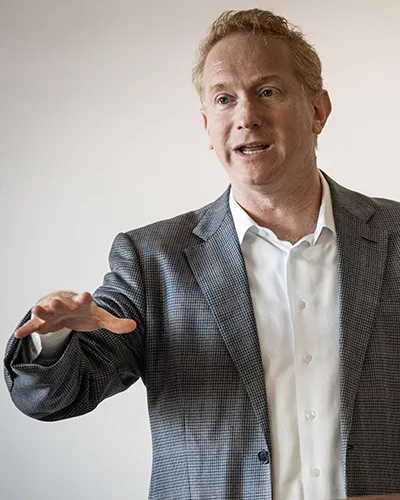
“Flexibility can be used in both directions. Flexibility can mean wanting a broad and expansive regulatory regime, or a very narrow one.” Professor Jonathan Masur
Now, in a post-Chevron world, Malani said that agencies must be careful about what rules they enforce, lest they get challenged in court and potentially lose. By using guidance instead of rules, agencies can put forth how they’re thinking about a law and still get regulated parties to comply. “Most regulated parties are repeat players, and they want to comply with agencies,” Malani said. “[Agencies] can switch to guidance and get a good portion of the compliance.”
In the long run, Malani believes that this will weaken the amount of power agencies have in enforcing statutes. Some companies in regulated spaces may not comply with guidance if the cost is too high. If agencies do truly want to make a rule to enforce, they will have to weigh whether it’s worth making a rule that can be challenged and later brought in front of a judge who may not agree with the rule.
“Now, you have to weigh the cost,” Malani said. “Whereas before [agencies] would just be like, there’s no cost to me, the courts are going to agree with me.”
This likely means that regulated firms will be more aggressive in resisting regulation, Strauss said. “That’s a predictable result,” he said. “If you’re an agency lawyer, you are now more cautious in the advice you give to the agency head when the law is unclear.”
A Likely Increase in Challenges
Another 2024 Supreme Court decision—Corner Post v. Board of Governors of the Federal Reserve System—expanded the amount of time allowed for challenging a regulation. Now, the six-year statute of limitations doesn’t start to run until the government enforces the regulation against an entity, meaning that even new companies can challenge very old regulations.
Jennifer Nou, the Ruth Wyatt Rosenson Professor of Law, who recently spent two years working in the White House’s Office of Information and Regulatory Affairs, believes that the Corner Post decision will have an even greater effect on the administrative state than Loper Bright.
“Now, the lawsuits are again going to be brought against much older regulations in a way that they could not before,” Nou said. “If you couple Corner Post with Loper Bright, it’s a huge change in terms of the kind of lawsuits that are going to be brought that were barred by the statutes of limitations.”
“If you’re an agency lawyer, you are now more cautious in the advice you give to the agency head when the law is unclear.” Professor David Strauss
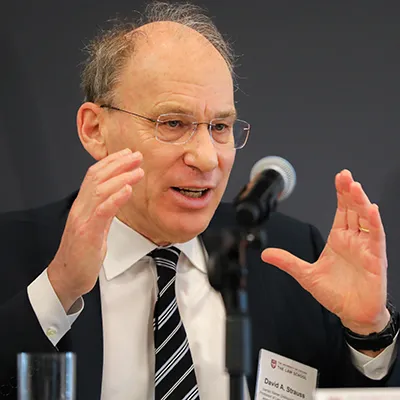
Challenges could come by way of lawsuits challenging regulations before they are enforced, Strauss said, or they could come after an agency tries to enforce a regulation against a firm. “Let’s say an agency tries to enforce an anti-pollution regulation or regulation about consumer fraud against a firm,” Strauss said. “The firm could say that regulation is invalid because it exceeds the agency’s authority. The agency will often rely on its expertise to justify the regulation. Now, lower courts may get the message that they don’t have to be as receptive to that argument as they were before.”
Even with both the Corner Post and Loper Bright decisions, Masur doesn’t believe that the federal judiciary has the stomach to see a wholesale upending of the administrative state, with dozens of regulations being struck down at once. Americans won’t wake up one day to Clean Air Act regulations having disappeared, Masur said, but it could be slowly rolled back in important ways.
“Over the next decade or two, we will see a striking down of what were some of the most ambitious regulations, while a lot of regulations that seem typical for the statute will be allowed to remain,” Masur said. “We might see very substantial effects on people, but it will be invisible in some ways. I don’t know how much particulate matter is in the air that I’m breathing.”
Clinical Professor Mark Templeton, who is also the director of the Abrams Environmental Law Clinic, said that if there are a greater number of challenges to protective EPA regulations, for example, more environmental organizations may feel the need to get involved legally to protect regulations from being stripped away. These organizations have finite resources, but much of their money may be funneled into rules challenging post-Chevron rather than pursuing policy initiatives or other kinds of litigation, such as citizen suits against individual polluters.
“They may feel that there is more at risk if EPA is not getting the same kind of deference that it got under Chevron,” Templeton said. “There’s greater risk of reversal, so they may feel that they need to put more resources into more cases involving rules.”

“If you couple Corner Post with Loper Bright, it’s a huge change in terms of the kind of lawsuits that are going to be brought that were barred by the statutes of limitations.” Professor Jennifer Nou
An Atmospheric Change
The Supreme Court overturning the Chevon doctrine makes one important immediate change: a shift in mood.
“Lower courts pick up on a mood,” Masur said. “They don’t want to be reversed by the Supreme Court. Now, lower courts are recognizing that the Supreme Court is in a mood not to tolerate deference [to] agencies. … That’s a strong pattern that’s emerging already.”
This is true, said Professor from Practice William A. Birdthistle, who previously worked in the Division of Investment Management at the US Securities and Exchange Commission (SEC). He saw that the atmosphere had already changed even before the Loper Bright decision. While with the SEC, Birdthistle was working on the promulgation of a rule that was later vacated by the Fifth Circuit even before Chevron was overturned. The court didn’t cite Chevron, but it did say that it believed what the SEC was doing was beyond its scope of authority.
“It’s right to say that the overruling of Chevron is a big deal, but it’s more of a big deal in an atmospheric sense,” Birdthistle said. “It’s a good barometer of the Supreme Court’s attitude towards agencies.”
In fact, attorneys at the SEC began preparing for Chevron’s disappearance years ago, Birdthistle said, by becoming specific and detailed in the rules it wrote. He has heard many SEC alumni and employees say that the Loper Bright decision makes relatively little difference for the agency.
“The SEC got specific in their details and citations to authority to make sure they were clear,” Birdthistle said. He compared agencies that wrote rules using Chevron in recent years to building property on unstable ground. Administrations will now have to spend time thinking about how to build rules in ways that are “insulated from major judicial reversals,” Birdthistle said.
Courts as Experts?
Lower courts may also face the task of becoming experts in complex matters on a case-by-case basis. Whereas Chevron deference wanted subject matter experts to make tough decisions, Masur said that the Supreme Court’s Loper Bright decision said that these are legal decisions for courts to decide.
“There have always been circuit splits. But in the past, the EPA was getting deference and that would, in theory, reduce the likelihood of a split.” Clinical Professor Mark Templeton
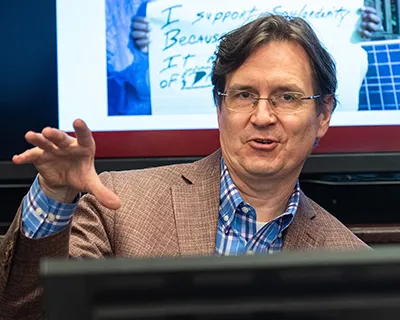
The Court cited statutes directing the EPA to regulate power plants “if the Administrator finds such regulation is appropriate and necessary.” When it comes to complex legal and regulatory questions—such as cryptocurrency, climate change, and artificial intelligence—will courts still consult experts to find out what “appropriate and necessary” should entail?
“It would be nice if they would do that,” Masur said. “And there’s some language in Loper Bright to suggest that that’s what they’ll do. … But it’s also very possible that they’ll see ‘appropriate and necessary,’ then they’ll pull out their dictionary and say, ‘All right, what does the word ‘appropriate’ mean? What does the word ‘necessary’ mean?’ That seems very plausible as well. We’ll have to see what courts do.”
“Higher-ups at the EPA are still going to take a stand on when to promulgate a rule and what the content of that rule should be, so they’re going to continue to be involved,” Templeton said. “But it will be more challenging for them as the lines between legal, policy, and technical decisions can be blurred, especially for complex, emerging issues, and they run the risk that one or more courts will decide that the courts have a better view.”
Cooperative Federalism Is More Insulated
Cooperative federalism—the programs implemented jointly by the states and federal government—are one area in which the effects of overruling Chevron will be less obvious, according to Fahey.
“One reason is the many different occasions the federal government and the states have to interpret federal statutes in cooperative programs and the difficulty of isolating and subjecting those interpretive judgements to judicial review,” Fahey said.
In her article, “Coordinated Rulemaking and Cooperative Federalism’s Administrative Law,” Fahey charts the complex intergovernmental process through which these programs are conceived and implemented. “There is a federal statute, federal regulations, a state statute, state regulations, and a contract-like agreement,” Fahey explained. “There are many moments of statutory interpretation throughout that process, including by state agencies and state courts, but only some of them are—in the ordinary course—subject to federal judicial review.”
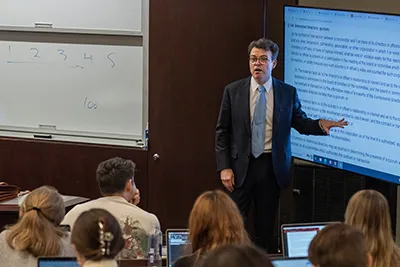
“It’s going to keep knocking out pillars, then there will be some reckonings. It’ll be interesting to see what the American public makes of it.” Professor from Practice William Birdthistle
These programs exist in an unorthodox legal universe, Fahey said. Dramatic shifts like abandoning Chevron deference will affect cooperative federalism programs, but we should expect them to lag behind federal programs, according to Fahey. The complexity, variation, and “comparatively lower salience of their administrative processes” may insulate cooperative programs from immediate disruption, she said.
Split Decisions and Forum Shopping
Much of the change wrought by the Loper Bright decision will impact lower courts, as the Supreme Court receives 7,000 to 8,000 requests to hear cases each year but only takes between 100 and 150 new cases. There could be certain cases where lower courts disagree on a decision, but the Supreme Court doesn’t have the time to hear the case.
This means that similar or adjacent areas could be subject to more split regulations, Templeton said. The EPA would set the contours for its regulations, but implementation happens at a state level, he explained. If the Eighth Circuit in Minnesota and Seventh Circuit in Wisconsin disagree on an environmental rule, each state must abide by its home circuit’s interpretation, he added.
“You could have different decisions and implementations whether you’re on one side or the other of the Mississippi River,” Templeton said. “There have always been circuit splits. But in the past, the EPA was getting deference and that would, in theory, reduce the likelihood of a split.”
Courts typically don’t like these kinds of disparate rules and will likely agree with each other to avoid this kind of divide, Malani said. But there is still the potential of disagreement, creating strange and potentially unworkable rule divides between states.
The issue of split decisions could be exacerbated if challengers to regulations use forum shopping to find courts friendlier to their cause. For years, Nou said that litigants have been bringing challenges to courts like the Fifth Circuit to get nationwide injunctions against regulations, as this court was already doing what Loper Bright intended before the decision. In a post-Chevron era, this trend may grow to more courts.
“Perhaps some of the marginal effects will be different in these other circuits that were doing less of that before Loper Bright,” Nou said. “The other circuits, post-Loper Bright, have now gotten this stronger signal that they, too, need to be engaging in this kind of robust statutory interpretation.”
The Loper Bright decision empowers judges, Strauss said. Some judges do not have clear political predilections and will continue to do business as usual. Other judges have well-known political inclinations, and if those challenging regulations can forum shop, Strauss said that they’ll likely search for judges whose political inclinations line up with their challenges. “You put this decision together [with forum shopping] and you’re likely to see people who are subject to regulation trying to pick their judges and win cases in lower courts,” Strauss said.
Whether forum shopping will be allowed to continue or expand may be decided by a coming Supreme Court case. The Court will hear a forum-shopping-related case from the Fifth Circuit in the case of FDA v. R.J. Reynolds Vapor. In the case, tobacco company R.J. Reynolds was looking to release to market an e-cigarette but was denied by the US Food and Drug Administration (FDA) by its interpretation of the Family Smoking Prevention and Tobacco Control Act. Instead of R.J. Reynolds bringing the case to likely unfriendly grounds to its cause—the US Court of Appeals for the Fourth Circuit—the tobacco seller joined with a Texas retailer and association of Mississippi gas stations to bring its case before the Fifth Circuit, which decided in favor of R.J. Reynolds’s right to challenge the FDA.
Now, the FDA is challenging what it believes is forum shopping in the Supreme Court, with the US Department of Justice writing in the FDA’s petition in the case that the Fifth Circuit’s decision “facilitates blatant forum shopping.” In addition to the coming Supreme Court decision, some states—like Illinois—have been creating their own laws to prevent forum shopping.
“There are a lot of debates, proposals, and bills to try and deal with these problems of forum shopping and nationwide injunctions that a lot of people see as being partisanly motivated by the courts,” Nou said.

“It’s not clear exactly what the new equilibrium will be, but it won‘t be chaos. It just takes time to adapt.” Professor Anup Malani
A “New Equilibrium”
Much of what the overturning of the Chevron doctrine will bring is still unknown, the changes coming via future court decisions.
Some professors believe that there will be unforeseen, long-term effects of administrative rules being struck down. For example, Birdthistle hypothesized whether courts’ scrutiny of regulations post-Chevron will produce controversies and public reaction.
“Unlike in previous instances,” Birdthistle said, “the regulators will be able to say, ‘We wrote a rule, and the court struck it down.’ … That’s my prediction of what you’ll see over the next couple of years. In the short term, you’ll see a lot more litigation, and much of it’s going to be successful. It’s going to keep knocking out pillars, then there will be some reckonings. It’ll be interesting to see what the American public makes of it.”
Other professors, like Fahey, are skeptical that reversing Chevron will cause “immediate and transformative shifts” in agencies. Strauss, too, believes that the decision might just cause changes at the margins, a message to courts that they can be more active in reviewing agency action.
But even that message may change as the years pass. When the Chevron case was decided, Strauss said that it was seen as a victory for conservatives amid President Ronald Reagan’s administration, a way to reduce overall regulation and for the executive branch to enable regulated firms to resist the regulatory efforts of environmentalists. Years later, up until it was reversed, Chevron was seen as a progressive doctrine, one attacked by conservatives. “It’s an odd thing, how Chevron changed from being a doctrine that conservatives eagerly sought and progressives opposed, to something that progressives defended and conservatives reviled. You can attribute that to political changes in Congress, the courts, and the executive branch,” Strauss said.
Although Malani has heard the doomsaying about the overturning of Chevron, he believes that an equilibrium will come, and the system will adapt.
“It’s not clear exactly what the new equilibrium will be, but it won’t be chaos,” Malani said. “It just takes time to adapt. … Maybe eighteen months, two years, three years, but they adapt to a new rule. We get overly excited about these things, but I can hardly find an example where something disastrous happened when the Supreme Court changed a rule.”
Editor’s note: An earlier version of this article misstated the justices’ vote in Loper Bright Enterprises v. Raimondo. The vote was 6-2, not 6-3. The justices voted 6-3 in the companion case, Relentless, Inc. v. Department of Commerce.





